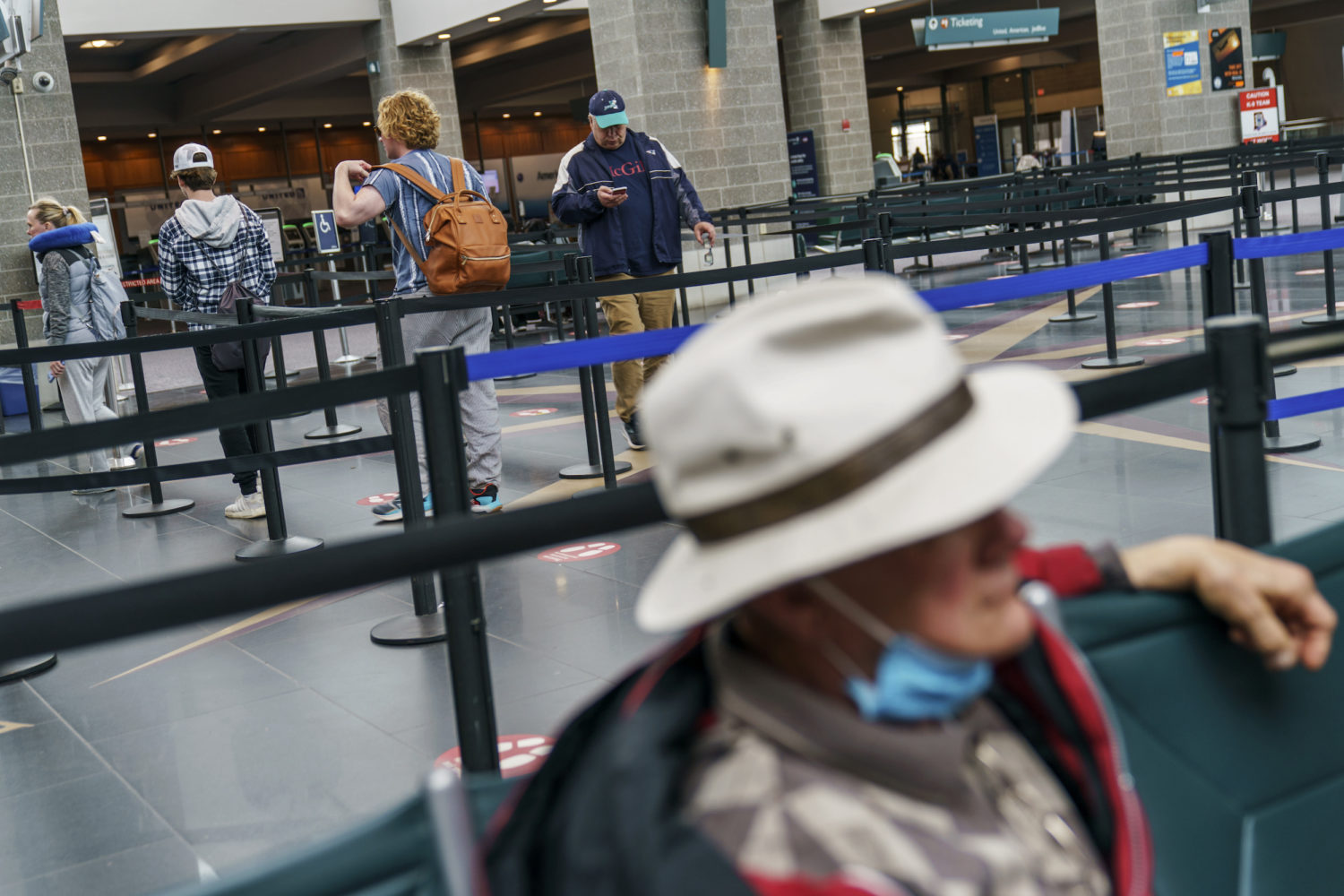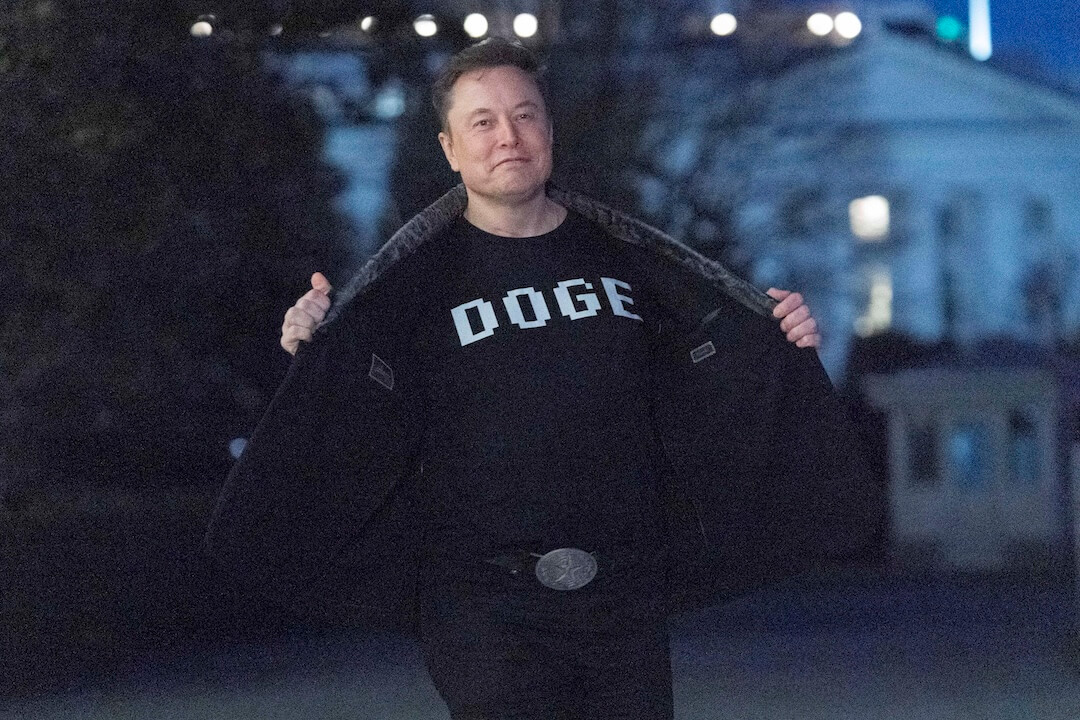 Covering COVID-19 is a daily Poynter briefing of story ideas about the coronavirus and other timely topics for journalists, written by senior faculty Al Tompkins. Sign up here to have it delivered to your inbox every weekday morning.
Covering COVID-19 is a daily Poynter briefing of story ideas about the coronavirus and other timely topics for journalists, written by senior faculty Al Tompkins. Sign up here to have it delivered to your inbox every weekday morning.
The Centers for Disease Control and Prevention told the U.S. Department of Justice to move forward with an appeal to a federal judge’s ruling that overturned the CDC’s mask mandate for mass transportation. The DOJ quickly filed a notice of appeal with the federal courts but has not, so far, asked for U.S. District Judge Kathryn Kimball Mizelle’s Monday order to be blocked.
In light of today’s assessment by @CDCgov that an order requiring masking in the transportation corridor remains necessary to protect the public health, the Department has filed a notice of appeal in Health Freedom Defense Fund, Inc., et al., v. Biden, et al.
— Anthony Coley (@AnthonyColeyDOJ) April 20, 2022
Considering how long it might take for a court to hear an appeal and then rule, the issue will not be over whether travelers have to immediately mask up again but instead over the future of the CDC’s authority in a health emergency — including a future COVID-19 outbreak.
The CDC said as much in its only statement late Wednesday:

(CDC)
White House Press Secretary Jen Psaki told CNN+’s Chris Wallace, “They (DOJ) want to fight to ensure that the CDC’s authority and ability to put in mandates in the future remains intact.”
Legal experts say not appealing or losing an appeal are both risks.
The government’s top priority is to protect what power it has left to enact a mandate months down the road if there’s another surge in virus cases, administration officials said earlier, speaking on the condition of anonymity as deliberations continued.
Appealing carries a significant downside, said Andy Slavitt, a former Covid response team official for the Biden administration.
“While it’s highly tempting to appeal a very dubious ruling like this, there is a risk in doing so,” Slavitt said. “If they appeal and lose, the CDC could end up powerless to take some basic public health precautions in the event of a surge in cases in the fall or winter.” With a slew of Trump-appointed judges, he said, that concern had to weigh on them.
Even if the federal government wins an appeal, imagine how difficult it would be to force people to wear masks once they removed them. In the past, when the federal government backed out of COVID-19 restrictions, states and cities picked up the ball and took the heat. But local governments have little to do with aviation rules, though they could require masks on local transit systems, including buses, cabs and subways.
The lunacy of our current system is playing out this week in Philadelphia, where the city recently reinstituted a mask mandate. If you fly in to Philly, you do not have to wear a mask on the plane but you have to mask up inside the airport terminal. If you get on an Amtrak train, you can take the mask off, but if you go to a Philly restaurant, put the mask back on. If you ride in an Uber or Lyft to the restaurant, you can go maskless.
What happens when a city raises its COVID alert level? New York may be next.

A child in a face mask poses for a photo with the bronze statue of Balto, a Siberian Husky, in Central Park in New York City on Sunday, Feb. 20, 2022. (AP Photo/Ted Shaffrey)
This week, New York City may move from its current green alert level to yellow, which means it is moving from a “low risk” for COVID-19 to a “medium risk.” It sounds innocuous enough, but is it?
Here are the details of the two alert levels. Notice that “yellow” recommends masks in indoor settings and recommends testing if you attend a large gathering.
New York City, like the Centers for Disease Control and Prevention, now keys its alerts to new cases as well as hospitalizations related to COVID-19. The system that cities, states and the federal government used for much of the pandemic put more emphasis on new cases.
The current outbreak tends to not send people to the hospital compared to previous outbreaks. If we were still using the old alert system, most of New England would be considered “high” transmission risk zones.
Milwaukee: Masks on, off, back on in one week
In Milwaukee, public schools dropped their mask mandate, then reinstated them the next day. CNN reports:
MPS initially announced March 24 that masks would become optional in its schools beginning April 18. But on Tuesday, a day after the new policy took effect, MPS informed families masks would again be mandatory, saying the decision was made “after determining a significant transmission of the virus within the city of Milwaukee.”
Since MPS announced the intended end of the mask mandate, the 7-day-average of new cases in Milwaukee about doubled to an average of 47 daily cases on April 15, according to data from the City of Milwaukee Health Department.
Moderna may have a new ‘better’ vaccine
Pharmaceutical company Moderna says it may soon be able to produce a new and improved COVID-19 vaccine that will be more effective against variants of the virus. It is called a “bivalent” vaccine and the company has been working on it for more than a year.
Bivalent is the medical term for a vaccine that stimulates an immune response against two antigens; both the original strain of the virus and the beta variant.
Moderna’s tests combine the current vaccine with an additive to fight against variants and Moderna says that will likely be what it will offer this fall. The company expects to hand over some of its test data to the U.S. Food and Drug Administration in early summer.
Moderna has hopes this new vaccine might provide protection for six months or longer. Stat points out that even if Moderna and others come up with a better booster, the FDA has made it clear that it, and not the drug companies, would decide what goes into a booster shot:
At a hearing of a Food and Drug Administration advisory panel earlier this month, experts fretted about exactly how governments should make decisions about the composition of annual boosters. And they were adamant that governments, not pharmaceutical companies, should be deciding the strain composition of the shots, as the World Health Organization does for influenza shots. But these data are a reminder that those decisions can be tough. What would experts do when faced with booster shots with several different compositions? Will adding new strains work similarly for different types of vaccines? There are a huge number of open questions.
There’s also the biggest problem with annual flu shots: People don’t get them. Even with the current Covid boosters, this has been true. Data presented to the FDA panel said that 217 million Americans are vaccinated about Covid. But only 90 million people have received a booster dose. How many will turn out for a new booster next year?
The times in which we live
And now, a tweet from a former U.S. surgeon general:
Flying today. A @delta pilot (🤯) walked by me in the airport and said, take your mask off man- breath free!
Why is it those who so strongly felt others were imposing their beliefs (in health, wellness and compassion) on them, feel so free to impose their beliefs on others?! pic.twitter.com/UQDXcLCoWN
— Jerome Adams (@JeromeAdamsMD) April 20, 2022
DOJ charges 21 with COVID schemes
Federal agents rounded up nearly two dozen people, including doctors, people offing fake COVID-19 cures and fake vaccine card peddlers. A doctor was arrested for ordering all sorts of useless lab tests on patients. Here are details on each case that came from California, Maryland, Florida, New Jersey, New York, Tennessee, Washington and Utah.
Doctors say they see an increase in ‘pandemic foot’ pain
The New York Times talked with podiatrists who say they have seen a big increase in what some are calling “pandemic foot” pain. Some foot pain is related to the virus, but more often it seems to be linked to inactivity or lots more activity, such as walking rather than using transit.
Now that spring is here, mandates are relaxing and people are eager to get their prepandemic bodies and hobbies back, they are hitting the pavement, said Dr. James Hanna, a podiatrist and president of the New York State Podiatric Medical Association. Many are exacerbating existing foot injuries or creating new ones.
“People thought they could just return to where they left off or try something they hadn’t tried in a couple years,” he said, “but their feet aren’t prepared for what their bodies want to do.”
Here is another angle doctors say they are seeing hobbling into their offices:
Overuse injuries aren’t the only reasons people have been feeling foot pain lately. Dr. Priya Parthasarathy, a Maryland-based podiatric surgeon, has also seen an uptick in toe and foot fractures. Some are caused, she said, by accidentally kicking furniture — a result of being home and barefoot more often — and tripping and falling awkwardly over pets. “You see one, then you see two, then three and then four,” she said of such pet-related fractures, “and you’re like, ‘Wait, there’s definitely a connection here.’”
Doctors say they have also noticed a fair number of injuries from people who bought exercise equipment during the pandemic that didn’t go so well. The University of Texas Southwestern Medical Center sent out a release including this passage:
“With the pandemic shutdowns, people had to adapt their daily routines. Many began running outdoors or purchased exercise equipment to maintain a healthy lifestyle,” explained Dr. Manchanda, Assistant Professor of Orthopaedic Surgery. “We saw an estimated 25-30% uptick in injuries as people were learning to navigate their equipment or outdoor terrain.”
The Lucky Charms investigation

A display of General Mills Lucky Charms cereal at a Costco Warehouse in Robinson Township, Pa., on Thursday, May 14, 2020. (AP Photo/Gene J. Puskar)
The FDA is turning to a handful of states to help investigate complaints from more than 100 people who say they ate Lucky Charms cereal and got sick. The FDA asked health officials in New York, Michigan, Kansas and Arkansas to contact people who reported bouts of vomiting and diarrhea after eating Lucky Charms.
There is a website called IWasPoisoned.com, which is not a scientific or government website, but a place where people can claim they got sick from this or that product. Again, their claims may or may not be credible, but there are about 3,000 posts from people saying they got sick after eating Lucky Charms. Patrick Quade, the founder of the site, told The Wall Street Journal that Lucky Charms received more illness reports than any other individual product in the site’s 10-year history. General Mills, the company that produces Lucky Charms, says it has “not found any evidence of consumer illness linked to the consumption of Lucky Charms.”
Food safety is our top priority. We take your concerns very seriously. Through our continuing internal investigations, we have not found any evidence of consumer illness linked to the consumption of Lucky Charms. Please send us a DM so that we can gather additional details.
— Lucky Charms (@LuckyCharms) April 18, 2022
We’ll be back tomorrow with a new edition of Covering COVID-19. Are you subscribed? Sign up here to get it delivered right to your inbox.








